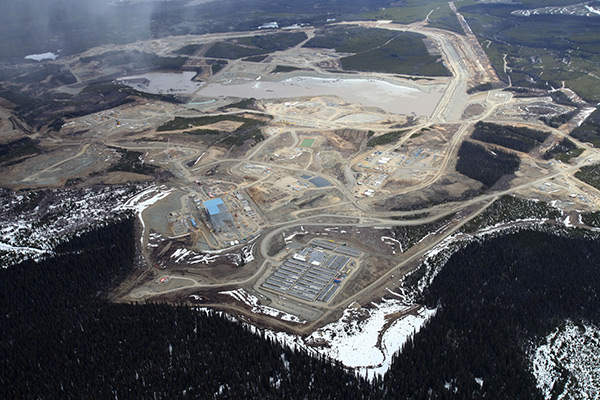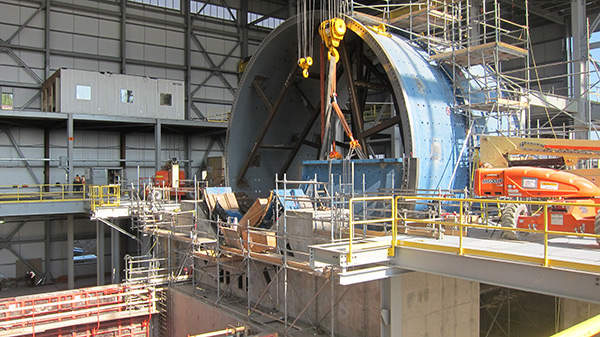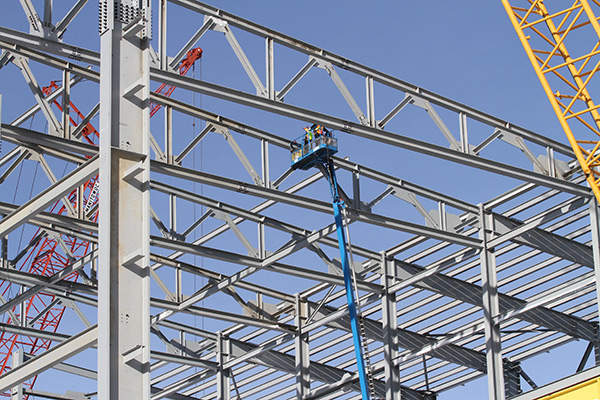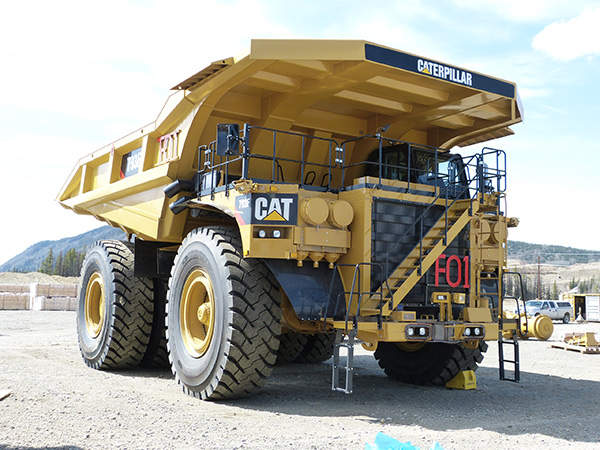The Mount Milligan mine is a copper-gold project in central British Columbia, Canada. The mine is located 155km north-west of Prince George.
It is owned and operated by Canadian gold mining and exploration company Centerra Gold.
A feasibility study and mining permits were completed and acquired by 2009. An Environmental Assessment (EA) certificate for the mining project was received in March 2009. British Columbia awarded the Mines Act Permit in September of that year.
Construction work on the C$1.6bn copper-gold mine started in June 2010 and the phased start-up of the concentrator commenced in August 2013. Commercial production from the mine commenced in February 2014. The estimated mine life of the mine is nine years.
The property is accessible by road from Mackenzie and Fort St James, and it is served by a 92km power line.
Mt Milligan mine development background
Mt Milligan was owned by Placer Dome in the 1990s and the company intended to develop the mine in 1993. The development was, however, stalled due to low metal prices and the mining permits expired in 2003.
The property was acquired by Terrane Metals Corporation, a subsidiary of the North American miner Thompson Creek Metals Company, in 2006. Thompson Creek Metals Company was acquired in 2016.
Geology, mineralisation and reserves
The mining property lies within the Quesnel Terrane volcanic arc of the Intermontane Belt. The geology is made of oceanic plates formed in the Early Jurassic Period and low metamorphic grade magmatic arc segments. The mine is an alkalic porphyry deposit of copper and gold.
The deposit is tabular and measures approximately 1,500m east-west, 2,500m north-south and 400m in thickness.
The mine consists of Southern Star (SS) Zone with monzonite stock, and Main Zone comprising Rainbow Dyke and MBX monzonite stocks. The mineralisation is of chalcopyrite, magnetite and pyrite oxides. Bornite is localised along intrusive-volcanic contacts.
The proven and probable reserves at the Mt Milligan mine are estimated at 191.02Mt graded at 2.4Moz of gold and 959Mlb of copper.
Mining at Mt Milligan
The copper-gold mine is a conventional truck-shovel open-pit mine with a capacity of 110,000tpd. It is expected to produce 194,500oz of gold and 81Mlb of copper a year.
The mine site has an ore processing plant with a capacity to handle around 60,000t/day of throughput. The produced copper concentrate is exported for further processing. Together with process plant improvement initiatives, a secondary crushing circuit, installed in 2016, expanded the possible throughput to a nominal rate of 62,500tpd.
The pit is planned as a sequence of distinct push backs and planned to improve ore production. The total ore and waste will be mined at an average rate of 46.8Mtpa in 2021 and 50.8Mt/a in 2023 until 2027, declining to 21.6Mtpa in 2028 resulting in cumulative LOM waste to ore ratio of 1.24:1.0.
The mine currently employs 45 pieces of mobile manufacturing equipment consisting of three blast hole drills, two rope shovels, two front-end rubber-tired loaders, 15 haul trucks and many other dozers, loaders, graders and excavators. It is estimated that the peak haul truck fleet will need to rise to 20 units for the remaining life of the mine.
Ore processing at the British Columbian mine
The Mt. Mulligan mine produces ore of low-grade copper-gold. It has a capacity to grind approximately 2,717t per hour at 92% availability. The 12m semi-autonomous grinding (SAG) mill is powered by a 23.5MW gearless motor drive.
The IsaMill machine is used for fine grinding the ore. It is one of the most energy efficient grinding machines on the market. The majority of operations use hydro-electric generated power from the grid.
The open-pit mine development operations have a smaller footprint of about 4km x 3km. Water used for the entire mining activity is not discharged into local water bodies.
The estimated recovery to concentrate required to be completed during the LOM duration is 80.6 for copper and 61.8% for gold.
Contractors for the Canadian copper-gold project
The engineering, procurement, construction and management (EPCM) contract for the copper-gold project was awarded to the British Columbia Mining Joint Venture (BCMJV), in August 2011. BCMJV is a 50:50 joint venture between AMEC Americas and Fluor Canada.
The scope of work included construction of the copper flotation process plant, storage facility for tailings, 92km of electrical cabling, a housing camp for 600 workers, and ancillary plant facilities.
ABB was contracted to provide power technology equipment for the project. The company supplied the gearless mill drive for the SAG mill, as well as two dual pinion mill drives for ball mills.
ABB also provided transformers, motors, electrics and synchronisers under a C$28m contract awarded in May 2009.
Knight Piésold was involved in the construction of the tailings storage facility (TSF) and the open-pit. It facilitated the environmental impact assessment of the project by gathering the environmental baseline results.








